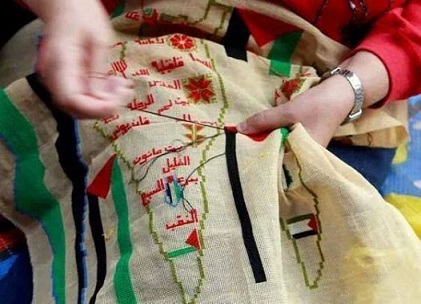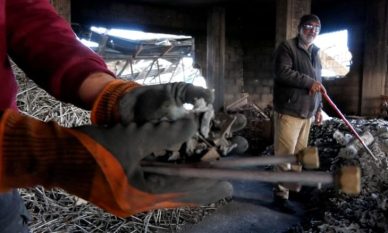Traditional Palestinian costumes reflected a woman’s economic and marital status and her town or district of origin with knowledgeable observers discerning this information from the fabric colors cut and embroidery motifs (or lack thereof) used in the apparel.
Woolen fabrics for everyday use were produced by weavers in Majdal Bethlehem Ramallah and Jerusalem. The wool could be from sheep goats or camels. Weaving among the Bedouins was and is still traditionally carried out by women to create domestic items such as tents rugs and pillow covers. Thread is spun from sheep’s wool colored with natural dyes and woven into a strong fabric using a ground loom.
Girls would begin producing embroidered garments a skill generally passed to them by their grandmothers beginning at the age of seven. Before the 20th century most young girls were not sent to school and much of their time outside of household chores was spent creating clothes often for their marriage trousseau (or jihaz) which included everything they would need in terms of apparel encompassing everyday and ceremonial dresses jewelry veils headdresses undergarments kerchiefs belts and footwear.
New styles began to appear in the 1960s. For example the “six-branched dress” named after the six wide bands of embroidery running down from the waist. These styles came from the refugee camps particularly after 1967. Individual village styles were lost and replaced by an identifiable “Palestinian” style.
(Source: Wikipedia)
















